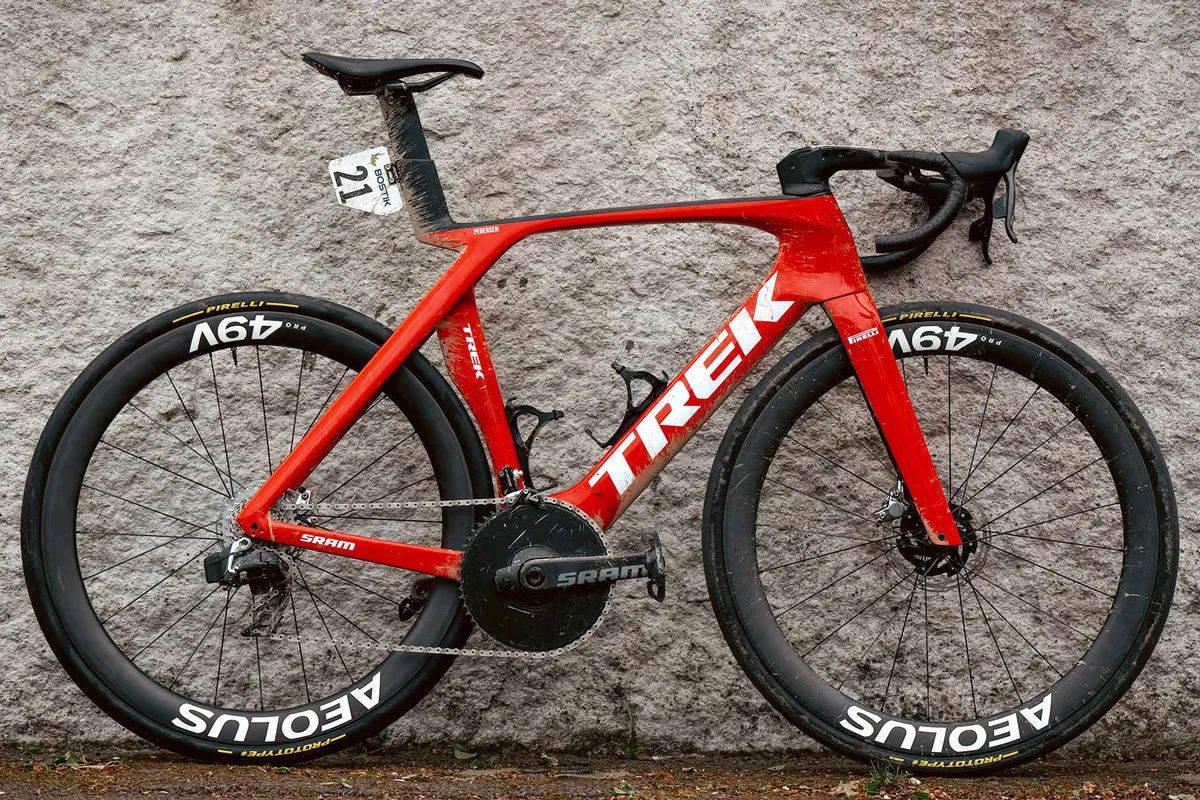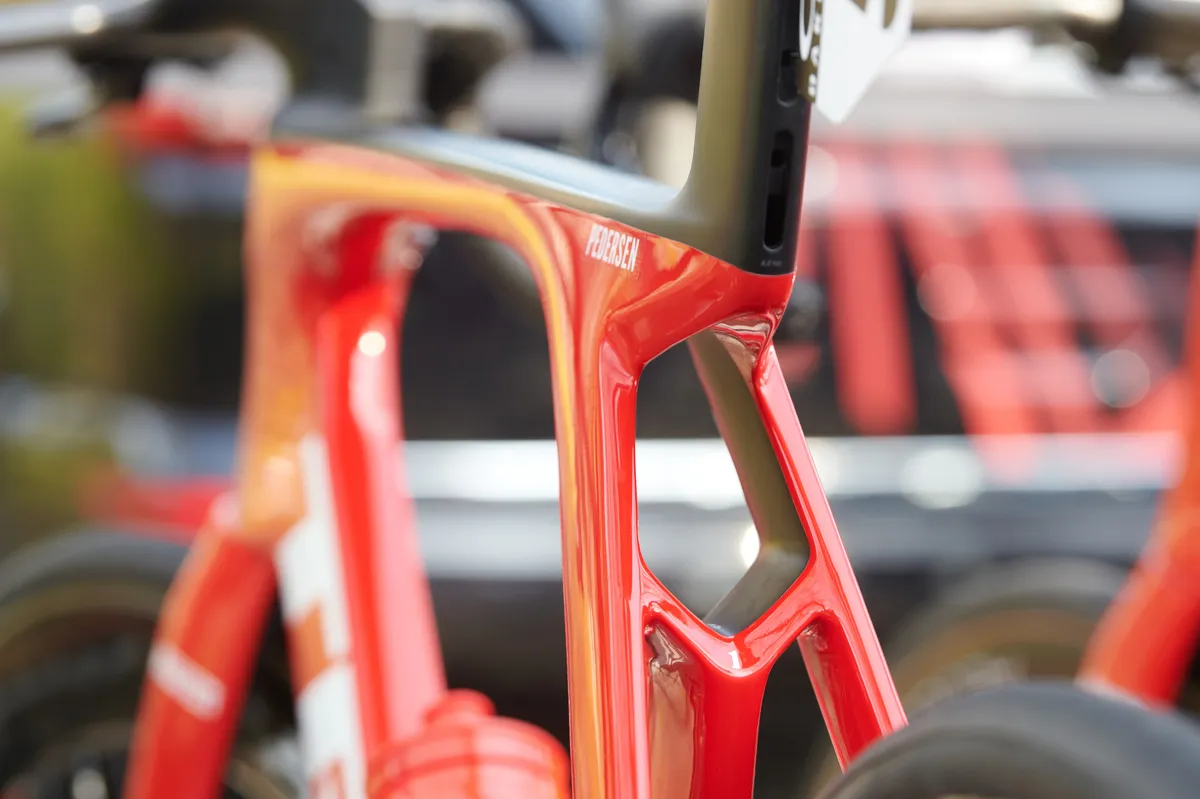A new, slimmed-down Trek Madone RSL has been spotted at the Critérium du Dauphiné, raising questions about the future of Trek’s road racing lineup.
The unreleased bike has been on a diet, compared to the current aero-focussed Madone – but retains the Madone name on the top tube. Trek's IsoFlow design – the hole in the seat tube – is present, too.
There are no official details on the new bike yet but, with Lidl-Trek riders using Trek's latest machine at the Dauphiné – a key Tour de France shakedown race – a release is likely to be around the corner.
One bike to rule them all?

The first notable aspect of the new bike is the slimmed-down silhouette.
Trek seems to have reduced the depth of tube shapes across the frame, suggesting the Madone has been on a diet to make it lighter.

This may mean that Trek claims the Madone can be used on all stages of a road race, be that the high mountains or flat sprint stages.

To do so, Trek will have had to take steps to retain the Madone’s aerodynamic credentials – though without wind tunnel and real-world testing data, it is impossible to decipher whether this is the case at this point in time.

What about the Emonda?

The key consideration is whether Trek has left space in its racing line-up for its current climbing bike, the Emonda.
Trek’s Emonda is currently the only bike the Lidl-Trek team has in use that can be built down to the UCI’s 6.8kg minimum weight limit. A 56cm Madone, for example, tipped our scales at 7.29kg for the existing model.

The slimmed-down tubes suggest weight savings.
Specialized killed off its Venge aero race bike, replacing it with the Tarmac SL7 and later refining the design with the current Tarmac SL8. Pinarello, meanwhile, is among the brands to also offer one race bike, sticking steadfast to the Dogma for Team Ineos-Grenadiers.
If Trek has reduced the Madone’s weight to get closer to the UCI's minimum limit, it would be hard to see any racer opting for the less aero Emonda.
IsoFlow...lite

Trek sent the cycling world into a minor meltdown when it introduced the previous Madone in 2022.
The IsoFlow seat tube hole and cantilevered seat post divided opinion, to put it mildly, but the design is back on the latest Madone, which comes only two years after the original release.

Back in 2022, IsoFlow replaced the IsoSpeed ‘decoupler’ system, which had been a feature of the Madone since it went all-in on aero with the 9 Series in 2015.
Trek claimed IsoFlow allowed the Madone SLR to match the compliance of the previous IsoSpeed system on its stiffest setting. It was also said to improve the aerodynamic performance of the frame by “around 3 watts”, while saving weight.
It is unclear whether Trek has refined the IsoFlow system in any way. As a result, we’ll have to wait for word from the brand about drag reduction.

Aero water bottles

While the standard shape of a water bottle is ideal for fitting any bottle and cage to your bike, their tubular profile is not exactly aerodynamically optimised.
Some brands, such as Pinarello, make an effort to smooth the airflow onto the down tube bottle by recessing the mounting points into the tube.
Others, such as BMC, design proprietary bottle cages that sit flush with the down tube and seat tube.

Trek appears to have taken a different approach, creating a bottle and cage system that, at first glance, is specifically designed for the Madone SLR.
It’s a measure that we often see on time trial bikes, but with racers requiring several bottle hand-ups throughout a stage, it hasn’t yet been a common sight on the road.

Given that the new Madone has been seen with specific aero bottles, we would expect Trek to admit this plays a key role in keeping the Madone SLR as fast as the outgoing bike, if not making it faster.
When will we find out for sure? Well, there's no official news yet, but we'll bring it to you when Trek's ready to announce this new Madone.
